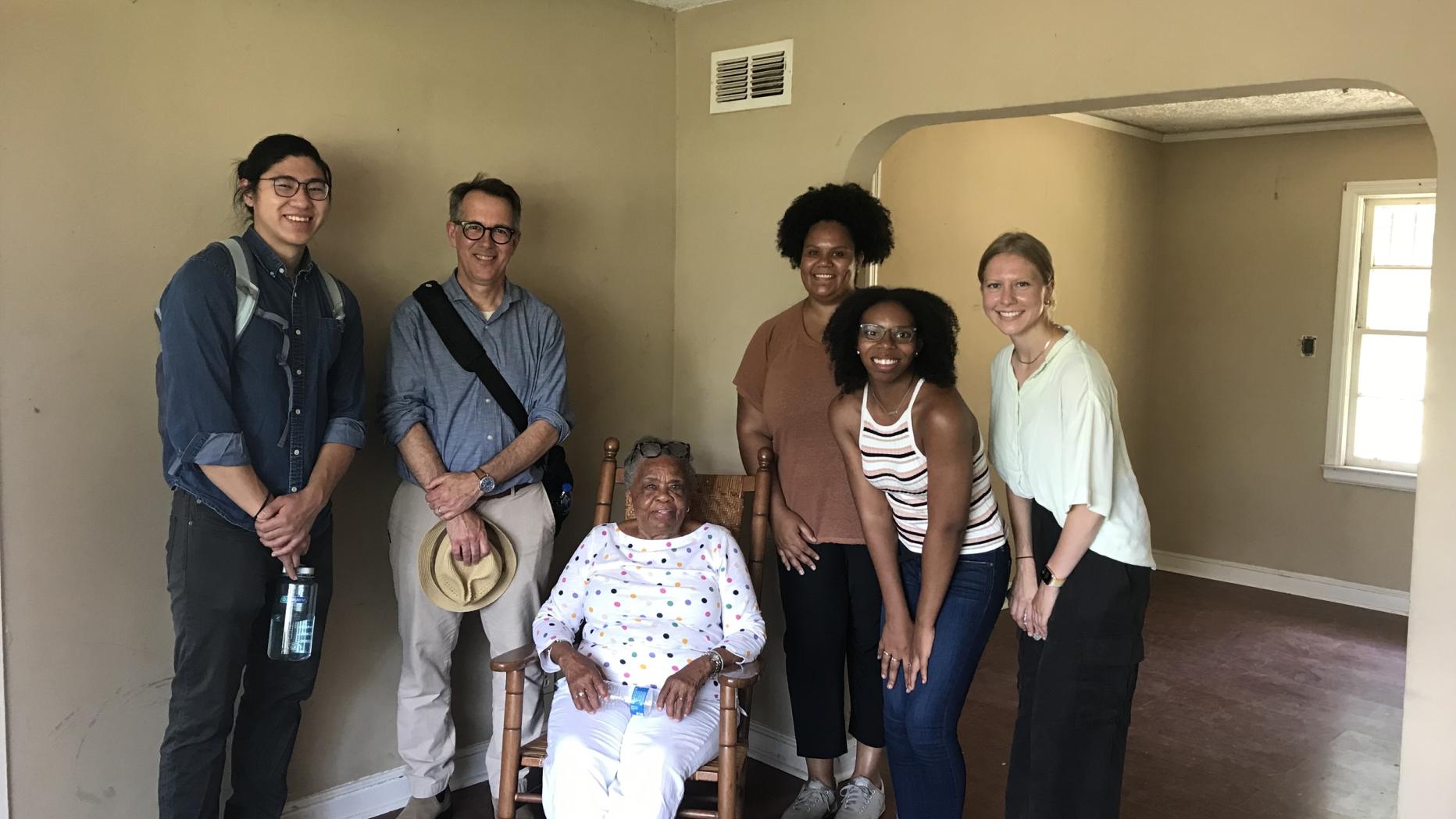Calvin Nguyen | Center for Preservation of Civil Rights Sites

The CPCRS site assessment team with Mrs. Willodean Malden, member of the preservation council for the Trinity Lutheran Parsonage
Stuart Weitzman School of Design
102 Meyerson Hall
210 South 34th Street
Philadelphia, PA 19104

The CPCRS site assessment team with Mrs. Willodean Malden, member of the preservation council for the Trinity Lutheran Parsonage
This summer I worked as an intern on a site assessment project at the Center for the Preservation of Civil Rights Sites. This project was in partnership with the Alabama African American Civil Rights Heritage Sites Consortium (AAACRHSC), which is a nonprofit organization dedicated to improving the management and sustainability of its twenty historic civil rights sites. Our team worked with two of these sites in Montgomery — the Trinity Lutheran Parsonage and the First Baptist “Brick-a-Day” Church — to pilot a new format of assessing and assisting management and interpretation at the sites. The intention of this new assessment format is to (1) approach these sites holistically and with multidisciplinary lenses, and (2) provide a less costly and quicker alternative to an Historic Structures Report.
My summer work was divided into three segments: (1) doing historical research and gathering material on each of the sites remotely in Philadelphia, (2) fieldwork in Montgomery for each of the sites, and (3) writing historical contexts, site condition assessments, and recommendations post-fieldwork. In the first month, my primary objective was to gather historic material and as much background information on the two sites as possible; this manifested in looking through historic newspaper databases, secondary sources, online Alabama archives, historic maps, and academic reports on Montgomery. The second leg of the internship involved staying in Montgomery for a week, in which one day was dedicated to each site to meet with management and survey the site. After the fieldwork, the remainder of my time was dedicated to synthesizing the information previously learned into a deliverable report for the sites to help with management; my own contribution consisted of site context (historic and urban), site condition assessments (management and historic interpretation), and recommendations for the future.
My responsibilities often coincided with what I’d learned in my first year in the Historic Preservation program. The internship drew on my skills as an historian that were developed in Documentation I (HSPV 600) and Public Histories in the Built Environment -Theory and Practice (HSPV 524) and my experience working with and assessing historic sites in Historic Site Management (HSPV 606). At the same time, the internship gave me invaluable experience in working with historic sites, the people that manage them, and a different working environment in Montgomery, Alabama. A large chunk of my work leading up to my fieldwork in Montgomery was learning about its urban and social history, something that opened my perspective to the broader strokes of urban history that attend more closely to the East or West coasts. In the internship, I learned to work better with a different urban and social context, as well as the attention to detail needed to think carefully about how to better manage an historic site.
Additionally, since the site assessment project focuses on interdisciplinary, our team included an historic preservation architect — Tiffani Simple — who focused on the structure itself and the building conditions. While not being in my area of expertise or responsibilities for the internship, being able to work with a group with diverse specialties allowed me to take in a more complete understanding of the different focuses needed to run and work with an historic site. Overall, my internship at CPCRS further developed my skills in public history and site management, while also educating me in the complexity and care needed to complete an effective historic site assessment.